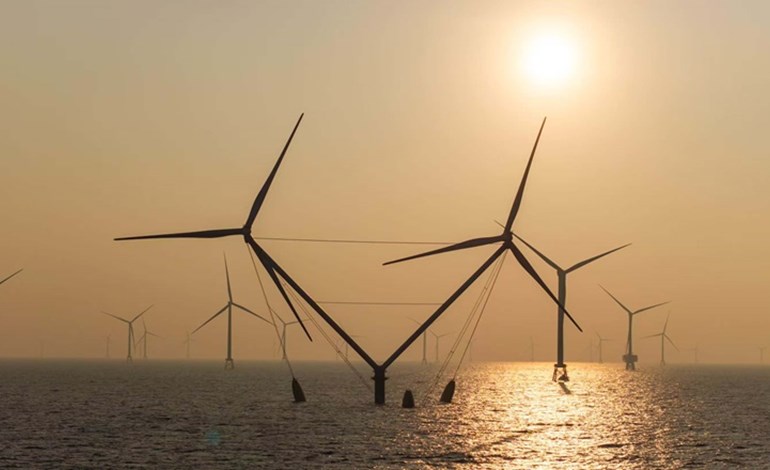
Mingyang has commenced operations of a floating foundation designed to host two turbines with a total capacity of more than 16MW.
The OceanX platform is installed at Mingyang’s Yangjiang Qingzhou IV offshore wind farm, 70 km from shore at 45 metres depth, off Guangdong.
OceanX features two 8.3MW offshore wind turbines mounted on a floating foundation, with a combined capacity of 16.6MW.
Towering 219 metres at its highest point and spanning approximately 369 metres in width, this colossal platform displaces around 15,000 tons of water, and is suitable for deployment in global waters exceeding 35 meters in depth.
It's unique design, featuring two side-by-side wind turbines with counter-rotating blades, presents new challenges for commissioning.
To ensure synchronised operation and eliminate discrepancies between the turbines, Mingyang has conducted thorough analyses.
It has successfully synchronised the operation of both “mirror” turbines, operating them simultaneously at the same frequency and state, achieving harmonious performance of the dual engines and turbines.
Upon operation, OceanX's counter-rotating impellers boost wind speed in the central area, enhancing air kinetic energy conversion.
This innovative setup increases power generation by 4.29% over a single turbine with an equivalent swept area.
The distance and depth increase cable-laying challenges.
The single-point mooring system requires cables to have a wider range of motion, necessitating careful routing to avoid interference and ensure safety.
It has introduced a "dynamic and static cable combination" design, with dynamic cables featuring a double-hump design for platform offset and enhanced safety.
It also used a dynamic-static transition technology, eliminating cable joints to improve efficiency, corrosion resistance, and adaptability to marine conditions.
Comprehensive testing ensures the reliability of the wind turbines.
OceanX can initiate startup and operation using its own power and control systems without external power, a process known as "self-starting" or "autonomous start-up." It also tested in island mode, validating its independent operation and stability off-grid.







